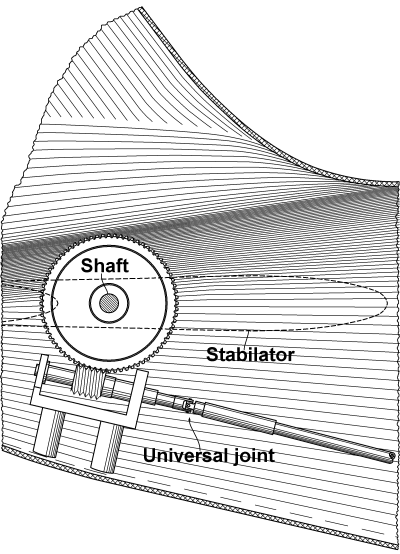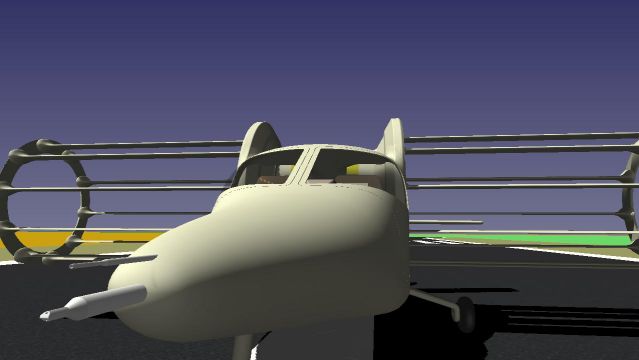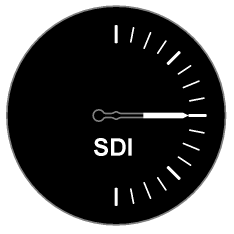

The alpha-mode of the biangular handling of the liftoplane requires to have a steady reference frame of the entire aircraft relative to the airstream. In particular, the condition for this requirement is simply to “keep the nose up against the airstream”, having the longitudinal axis of the fuselage exactly parallel to the airstream. So, I reference this feature as a “stream following” mode of operation or simply: stream following.
This mode of operation is supported by a system having two principal elements: some kind of actuator for performing the corrective actions and some element to detect a deviation of the airstream. For the first I use stabilators. And for the second I use the Stream Deviation Tube SDT, which is a new kind of pneumatic sensor tube. Both elements act in a common negative feedback loop of this system.
The rotors create a high moment of rotation of the entire aircraft. I reference it as Moment Ratio (MR) defined as I explained in the topic about cyclorotor aircraft. For many operations its value lies in the range from 0.2 to 0.7, but for high-speed flight, it can be higher than 0.85. Part of this MR value is compensated by weight of the pilot and passenger, and by adjusting the placement of the accumulator racks. But a significant value still remains in the high MR case. So, the stabilators have a sufficient area to provide a force sufficient to compensate for that. The certain high area requires to have a precise steering of the pitch of these stabilators. I use a worm gear for this steering as it pictured in the chart below.

Here, the worm gear is fixed on a shaft, which is common for both stabilators. Rotation of the gear by the worm is originated from the cockpit direction through a universal joint.
The SDT is located in the center of the nose of the fuselage, as shown in the image below.

The forward side of the SDT has two equal slopes, where the one looks to up and the other looks to down, each having about 40 degrees from the horizontal plane. Two equal entry channels are drilled in the centers of these slopes perpendicular to their surfaces. At the beginning of these channels, dynamic pressures develop when the SDT encounters the airstream. These pressures propagate through the interior of the SDT toward the cockpit, similar to what happens with the Pitot-static tube (PST) that is observed above the SDT in this image. These output pressures of both tubes act on the respective electric sensors and the corresponding pneumatic indicators. For these SDT pressures, there is a special Stream Deviation Indicator (SDI) as part of the cockpit instrumentation. It is pictured below.

The SDT also has electric heaters inside, against icing. Additionally, its construction has an anti-clogging drainage system for high reliability.
The pitch control of the stabilators is performed by a special Stabilator Pitch trimmer (SP-trimmer), which is also part of the cockpit instrumentation. The manual control of this trimmer, together with using the SDI, services only emergency cases. Normally, this trimmer is under an automatic control. A special servo is mechanically connected to this trimmer, which is also connected to a special encoder. A special stabilator controller manages this trimmer through this servo, using a feedback from these electric sensors with application some low-pass filter. The encoder reports its value to a central computer. A bidirectional connection between the stabilator controller and the central computer permits to apply a more sophisticated management to the stabilator controller from the side of the central computer upon reusing the propagated values of pressures from the electric sensors. Also, this connection permits to pass the value of the encoder to the stabilator controller as a feedback to prevent it from operating outside the operating margins of the stabilators.
Copyright © 2018-2023 Yuri Feldman - All Rights Reserved